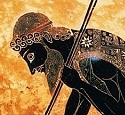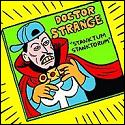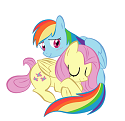|
the JJ posted:And you point to a firetruck and go 'red.' And Jane says ared. Then Jane points to a traffic cone and goes "Red!" And you say "no Jane you dumbass, that's orange." And then she points to a person on Jersey Shore and says "aorange" and then you say "Oh, that's orange too." And then she says "Tarzan you dumb rear end you just pointed to that ared cone and said it was orange and now you're pointing to that aorange douchenozzle and calling him orange too, what the gently caress?" This is a great explanation which also has me gasping for air. Internet love for you.
|
|
|
|

|
| # ? May 26, 2024 18:32 |
|
What were some key milestones in the transition from Late Antiquity to the Early Middle Ages? I'm familiar with Diocletian's creation of dioceses and smaller administrative areas as well as Constantine only stabilizing large denomination currency but not more commonly used coinage, encouraging barter transactions.
|
|
|
|
This is by no means the end all be all, but the stupid as gently caress decree of "WELP YOU'RE A COOPER ALL YOUR OFFSPRING FOREVER SHALL BE COOPERS NOW." Or farmers, or potters, or whores, or whatever was a nice big swing of the needle towards serfdom. The breakdown of civil defense forces that required the fortification of previously unfortified cities and towns, turning them into self-sufficient fortresses controlling small tracts of land also didn't help.
|
|
|
Big Beef City posted:This is by no means the end all be all, but the stupid as gently caress decree of "WELP YOU'RE A COOPER ALL YOUR OFFSPRING FOREVER SHALL BE COOPERS NOW." Or farmers, or potters, or whores, or whatever was a nice big swing of the needle towards serfdom. In general, I don't think you'd be wrong if you said that Diocletian was the man most responsible for establishing the basic structure of European life for the next 1000 years or so. However, this sort of discussion is more about what makes Late Antiquity, well, Late Antiquity. Late Antiquity is basically the early Middle Ages but with the WRE still around in some very important ways. These similarities make milestones along the way a little hard to define - other than the fall of the WRE, what basic social structures were all that different for your average person between Late Antiquity and the Early Middle Ages? Not too many! Certainly not as many as were different between, say, the Republic and Late Antiquity. Here's the biggest one: trade. The important milestone for this is the Arab conquest, which cut Western Europe off from the eastern trade routes. I guess the 600s is a pretty late cutoff for Late Antiquity, but I think there are arguments for it. The Arab conquest is when the ERE basically commits to holding Greece, Thrace, Anatolia and southern Italy alone, and sees a new culture and new religion introduced to a vast swathe of the former Roman world. At the same time, the Romanized Germanic kingdoms became more Germanic and less Roman. Edit: I should add that this was covered in more depth earlier in the thread, too. Jazerus fucked around with this message at 08:57 on Nov 10, 2013 |
|
|
|
|
So here's a maybe dumb, maybe repeat question: I'm listening to the history of Rome podcast, and he mentions that rome's post-phalanx army organization was a key factor in what made them such a juggernaut. Did anybody every try to copy it? Either the maniple system or the post-Marian army I mean. I get that other factors were important too (discipline, logistics, cultural values) but did why didn't their army org take the world by storm the same way that the phalanx did, given how obviously effective it was?
|
|
|
|
At a guess, maybe because it relied so heavily on good coordination, training and organisation that it could only be executed with standing armies; troops who - outside of war - were hanging around all day with nothing to do except train. Weren't most neighbouring states still relying on levies raised from farmers and craftsmen for a few weeks out of the year? If that's true, having that mass of men available for a standing army relies on a lot of other factors that could have been particular to Rome at the time, like a large population of unemployed (unemployable, due to a massive slave workforce) and landless urban citizens just desperate for any way to make money. communism bitch fucked around with this message at 10:14 on Nov 10, 2013 |
|
|
|
The Roman state did have a unique ability to raise/maintain/train troops that no other empire in the area was really able to match. But there absolutely were other ones who tried to copy the legionary model. Seleucia, notably, had fake legions. Polybius says the Argyraspides were outfitted like legions by the end of the Seleucid empire, rather than/in addition to the phalanxes. They seem to have been busy trying to convert their army into something resembling the legions around when Rome rolled them. I believe the Pontic armies also tried to copy the legions, and a couple other states did it too. You can stretch your timeline and go to much later, too. Once the medieval countries start really centralizing and transitioning into more modern types of states, a lot of them start their national armies by copying Roman legions and using the surviving Roman military manuals and stuff. There's also some convergent evolution. I suspect the manipular system and the Macedonian phalanx style of organizing into smaller square units that can maneuver independently come from solving the same tactical issue.
|
|
|
|
I guess the Middle Ages thread would probably be the better place to ask but is there a good podcast that covers the post-WRE early middle ages of Europe? I know there's History of Byzantium but I assume that's more about, well, Byzantium and the east as opposed to the Ostrogoths, Visigoths, Merovingians, etc. in western Europe.
|
|
|
|
I don't know of one but I really hope someone does. My Europe reading has been shifting toward late antiquity/the early Middle Ages lately and I don't have a lot of stuff yet.
|
|
|
|
Grand Fromage posted:The Roman state did have a unique ability to raise/maintain/train troops that no other empire in the area was really able to match. But there absolutely were other ones who tried to copy the legionary model. Seleucia, notably, had fake legions. Polybius says the Argyraspides were outfitted like legions by the end of the Seleucid empire, rather than/in addition to the phalanxes. They seem to have been busy trying to convert their army into something resembling the legions around when Rome rolled them. I believe the Pontic armies also tried to copy the legions, and a couple other states did it too. We also kind of interestingly see a similar redoing of this when Maurice of Nassau and Gustavus Adolphus and others break down the size of infantry units later on. I think that basically you need a strong, competent, reliable noncom-equivalent corps in order to do this. I think the point about convergent evolution is appropriate not just at that time, but contingently during other periods; military reformers often realize that they can achieve more by division of units into smaller numbers, but in order to do so they have to have the command corps to back it up.
|
|
|
|
And in recent years we've seen the US Army become more centered on the brigade rather than the division.
|
|
|
|
Micromanagement being more effective as long as you can actually supply the management needs?
|
|
|
|
Does the requirement of a professional army with free time to train also explain why roman-style fighting went out of style in the Middle Ages, as feudal lords relied mostly on levied armies? Follow-up question: did roman-style fighting actually go out of style in the Middle Ages? As I write that out, I realize that I'm not sure why I assume that. I was wrong about the roman vs Greek gods before, so best to be careful I suppose.
|
|
|
|
veekie posted:Micromanagement being more effective as long as you can actually supply the management needs? Micromanagement is not the word you would want to use. If anything, decentralizing the command structure is the opposite of micromanagement. Ainsley McTree posted:Does the requirement of a professional army with free time to train also explain why roman-style fighting went out of style in the Middle Ages, as feudal lords relied mostly on levied armies? New technology with regards to cavalry helped kill the idea of a short-sword armed legion. I think both halves of the Empire switch to spear-armed legions after a certain point. You'll have to define "Roman-style" fighting if you want to point to the decline in professionalism. A big dense formation of dudes is always the way to go when you're talking about heavy infantry. Also, you can't separate the effectiveness of the Legion from its logistics and administration. There's really nothing special about the specific fighting style of the Romans, its more like a grindy battle of attrition that the Romans would always win.
|
|
|
|
Ainsley McTree posted:Does the requirement of a professional army with free time to train also explain why roman-style fighting went out of style in the Middle Ages, as feudal lords relied mostly on levied armies? Not really. Warfare changes constantly but in the Middle Ages there are many continuities with the Roman tradition, both stylistic and technological. In the early middle ages the germanic states are equipped with Roman style arms and armor fighting with Roman siege equipment waving Roman banners. Tribal levies might get some use after the fall, but professional soldiers are still important, at least in the Frankish Empire.  Carolingian waving a Roman style banner Carolingians were big fans of the author Vegitius, and we have several copies of his book Epitome of Military Science dating from the 8th and 9th centuries, strong evidence Roman strategies were still studied. Squalid fucked around with this message at 22:13 on Nov 10, 2013 |
|
|
|
Do Romans really get to lay claim to wind socks? I feel like the technology is independently reproducible.
|
|
|
|
Well they certainly didn't invent the things, since it was probably copied wholesale from the Dacians. But they did use them as military standards for a long time. And the Franks were definitely using them because the Romans did.
|
|
|
|
Arglebargle III posted:Do Romans really get to lay claim to wind socks? I feel like the technology is independently reproducible. That banner is identical to those used by late Romans. If you look at European equipment in late antiquity/the dark ages you can typically draw a straight line back to some Roman equivalent.  4th century Roman helmet  6th century German helmet.
|
|
|
|
Counterpoint: heads are heads. Check out the convergent construction on these 20th century American football helmet. See the design lineage! Clearly also inspired by Rome.  EFfort: Chinese officer's helmet, looks like Ming dynasty compared to like the two others I know. Hardly an expert opinion.  Note the cheek/neck guard and reinforcement over the brow, although the construction is quite different as you'd expect for 1000 years later. That lattice-work bill looks useless, I bet a cloth bill would go over that.
|
|
|
|
On the other hand, we are talking about Germanic peoples that had moved into the WRE only a century before that German helmet was made. Roman flags and helmets still existed, no convergent evolution of equipment is necessary to explain the continuity.
|
|
|
|
|
Have you got more pics of sweet-rear end Chinese military equipment? I love the aesthetics of that stuffArglebargle III posted:Do Romans really get to lay claim to wind socks? I feel like the technology is independently reproducible. They were a Samartian thing that the Romans picked up after they absorbed a bunch of them into their cavalry. Then they were just spread around until they became "tradition"
|
|
|
|
Jazerus posted:On the other hand, we are talking about Germanic peoples that had moved into the WRE only a century before that German helmet was made. Roman flags and helmets still existed, no convergent evolution of equipment is necessary to explain the continuity. That's not really enough evidence to call it a direct lineage. Lots of helmets look like that, it's just a good idea to have a nasal plate and cheekplates. Also, you're discounting the idea that those Germanic peoples were already wearing helmets similar to that Roman design, which is probably the answer. Also, those two don't actually resemble each other all that much. The reinforcing sections are different, the nasal strips are different lengths,
|
|
|
|
It would be more accurate to say that mostly everyone in Europe was encountering each other and adopting good ideas from one another when they saw it. Mail armor was invented by the Gauls and adopted wholesale by Rome when they ran into it, the gladius from Spain, that sort of thing. When someone comes up with a good idea it tends to get around unless governments put serious effort into preventing it, like China did with silk production technology.
|
|
|
|
Actually Slim Jim Pickens you caught a mistake of mine, I thought that german helmet was an example of Roman ridge helmets, like the Roman one I posted, but it's actually a spangenhelm. Although both styles were used in the late Roman army they are constructed differently and have different origins. The Roman ridge helmet is copied off Persian designs and the spangenhelm probably from the Goths or Sarmatians. Pretend I posted this instead: Which is an 8th century Anglo-Saxon article, and is constructed essentially the same way as that 4th century Roman helmet. Which brings me to my point; dark age equipment doesn't just look Roman, it actually retains specifically Roman characteristics. In the case of this Anglo-Saxon helmet, the dome was constructed of riveted strips of metal instead of a single piece, A construction style which is originally imported to France and England and Italy, and probably Germany, by the Romans. Squalid fucked around with this message at 03:37 on Nov 13, 2013 |
|
|
Slim Jim Pickens posted:That's not really enough evidence to call it a direct lineage. Lots of helmets look like that, it's just a good idea to have a nasal plate and cheekplates. Also, you're discounting the idea that those Germanic peoples were already wearing helmets similar to that Roman design, which is probably the answer. I guess I should have said that the Germanic peoples would have likely adopted the general style from the Romans long before, yes, considering the long history of contact as legionaries and along the Rhine and Danube. I'm not discounting anything, but to claim there is no relation and that convergent construction is just as likely as direct influence one way or another as Arglebargle appeared to be saying seems a little silly to me in the context of discussing military technology in former Roman territories not all that long after the WRE collapsed. That's all. Jazerus fucked around with this message at 04:35 on Nov 11, 2013 |
|
|
|
|
For Atlas Hugged, because he was dumb(?) enough to ask me to keep doing these. 87 BC - 23 AD: Weak Emperors, Wang Mang's Interregnum, and the Han Restored In 87 BC Emperor Wu finally died with a 6-year-old grandson on the throne and a powerful regency. (If you recall the Crown Prince had lead a rebellion, so this odd choice of heir is more understandable.) The regency was supposed to be three people but an untimely death, some astute maneuvering and a few executions later there was only one regent left, a guy named Huo Guang. Huo played nice with the aristocracy though and things kept chugging along so he was generally considered an OK Guy. The boy emperor died in his early teens and with nobody but the Regent to choose a new emperor, power became concentrated more and more in the court officials. They even dismissed an emperor for bad behavior! In fact the Han empire didn't have another strong emperor until after the interregnum which is coming up in a minute. The court officials did alright in keeping the empire trucking though 87-1 BC. They reduced taxes (remember Wu Di had come close to bankrupting the state with his military expansion) and repealed some of the state monopolies. Emperors came and went, some of them good and some of them pretty bad, but real power lay in the upper levels of the bureaucracy. The Imperial system was rotting though, and while it may sound nice to have the bureaucrats running things and the emperors recede into the background human nature meant this state of affairs couldn't continue on this trajectory forever. Emperor Yuan (another all-around OK Guy) died and left his no-good womanizing drunken son Emperor Cheng in charge, but really Yuan's wife Empress Dowager Wang was the power in court and started promiting the extended Wang clan into more and more positions of authority. As Emperor Cheng's court descended into a total shitshow (murders and suicides in the imperial palace, yikes!) the Wang clan (or House Wang if you like the Western appellation) became the court officials who were running things in the background, but also the Emperor's cousins. It doesn't take a history expert to see what's coming. When Emperor Cheng's gay heir died early too in 1 BC poo poo started to hit the fan dynastically. (If you play Crusader Kings II, this sounds like a real bad run of luck. You get Wu the Great followed by a regency and a string of early deaths. Things look like they might improve with Yuan the Wise but his son is a drunk moron and his son is gay, and meanwhile all my dukes are Wangs and oh they're my cousins too and oh poo poo they have claims on Empire of China...) China sort of dodges a bullet here because the Wang who seizes power is actually an OK Guy too. Not the best emperor as we'll see but not a raging dickhead either. Wang Mang is Emperor Cheng's cousin, and the least fortunate of his immediate family having not come into any particular title. Instead he moved to the Imperial Palace with his mother and was a diligent student of Confucius and all around decent young man to the people of the court. As an intelligent, capable, and friendly guy hanging around court with impeccable family connections, Wang Mang was well placed to maneuver himself into a high position despite his lack of title. After some slick moves he landed himself the post of Commander-in-Chief of the army in 8 BC, quite a promotion considering his total lack of previous responsibility. However, Wang Mang proved to be a pretty good administrator; he was diligent, knew how to manage people, and he was again just a decent person who people began to admire for his moral uprightness. He had only one wife and was a good husband and father, and frugal despite his position. When he resigned after a spat with the (by now different) Empress Dowager, hundreds of people in Chang'an (the capital) petitioned Emperor Ai (the gay one) that he be returned to his post. After Emperor Ai died in 1 BC Wang Mang was summoned to Chang'an quite suddenly to become Regent; and perhaps tempered by a stint out of favor immediately moved to consolidate his power. He banished, demoted, or forced into suicide the previous emperor's immediate family and began building himself up as a new Duke of Zhou, a regent of the Zhou Dynasty praised by Confucius as the ideal ruler. As people woke up to what OK Guy Wang Mang was doing he had to purge the Wang clan more and more thoroughly until finally in 8 AD he murdered the child Emperor and declared the Xin (New) Dynasty. Aside from his bloody* rise to power Wang Mang tried to be a good Emperor. He had a whole long list of reforms that he wanted to implement, from the economy to the aristocracy, and like a true believer he tried to implement them more or less all at once. Some of the real screamers: land reform by nationalization and redistribution, establishment of a state economic bureau, creation of an income tax, outlawing circulation of old coinage (with a new issuance) and renaming every province and town to their Zhou dynasty names 500 years ago. Some of these are obviously good ideas ahead of their time, some are idiotic, and none of them succeeded although a lot of people were punished for flouting them before Wang Mang gave up on trying to implement them. Bad things piled up very rapidly for Wang Mang from 10-20 AD, some of them his fault but some beyond his control. His revolutionary domestic policies were failures and had thrown the economy and bureaucracy into some disarray. Around 14 AD Wang Mang managed to piss off, one after the other, all the major Han vassal kingdoms from the southern hill tribes to the Koreans. It didn't help that the armies he sent after them generally failed, either on the campaign trail or on the battlefield. Then, while Wang Mang was dealing with these military defeats and foreign policy, famine and flooding hit China's breadbasket in the Yellow River basin after the Yellow River decided to up and move, as it does sometimes. By 17 AD the peasants in China's heartland were starting to rebel while the Emperor was preoccupied with Xiongnu getting uppity again, and by 20 AD when Wang Mang finally got serious about crushing the rebellion it had attracted enough support that he couldn't. By 23 the rebels had rallied around a couple distant relatives of the Han line; scions of House Liu as it would have been known in Europe, and begun to capture cities and flip local military commanders in earnest. Wang Mang gathered all his forces and sent them in one huge army to crush the rebellion, but the rebels lured them into a trap. They let the Imperial army settle into a siege of an empty city and then mounted a daring surprise attack from both within and without. The Xin general was killed in the opening engagement, the imperial army routed and scattered, and Xin military was broken. The country began openly switching sides to the restored Han dynasty and Wang Mang's head was spiked on the new Emperor's city wall (literally) by the end of summer. I'll end it there for today. There's only one or two posts left until we end the Han Dynasty. I never intended this overview to take this many words but I've enjoyed refreshing my Chinese history knowledge and writing this in a more casual style than you usually see. I'll probably continue up until the Three Kingdoms but my knowledge there starts to become really shaky, to the point that by the latter half of the Three Kingdoms period I'm not sure what's going on. Wang Mang is an interesting figure. He's a moral rebel; an idealist with a lot of blood on his hands; a traditionalist with ideas radically ahead of their time. He's an unlucky emperor what with the whole flood and famine he got dealt in the first 10 years of his reign. Perhaps above all though he was a bad emperor; unable to get his way in domestic or foreign policy and willing to destroy his fragile legitimacy over policies doomed to failure. I don't think he has a terrible degree of influence over the later Han; his rebellion is more a symptom of a dynastic decline than a force for historical change. *Well, sort of bloody. He killed a lot of Wangs who were trying to thwart his rise, and he poisoned a little boy, but in terms of total lives his rise was pretty bloodless. Compare to his contemporary Octavian and he comes out squeaky clean. Interesting tidbits that didn't fit in the narrative: Wang Mang was supposedly returned to power so suddenly because Emperor Ai had left the Empire to his gay lover and the Wang clan needed that nipped in the bud right quick. Wang Mang wanted to go back to cowrie shells as the smallest denomination of currency. Yeah. When he announced his new reign, Wang Mang renamed the capital Chang'an to... Chang'an. They're homophones in modern Chinese and mean virtually the same thing. Why would you change Long Peace to Enduring Peace? Same difference. The economic bureau was supposed to control commodity prices and currency values through market actions (buying, selling, stockpiling) rather than dictating prices. Probably wouldn't have worked right but it was certainly an idea way ahead of its time. Arglebargle III fucked around with this message at 08:22 on Nov 11, 2013 |
|
|
|
I'm honestly not really qualified to opine on the design of Roman and post-Roman equipment so instead of me hamfistedly making arguments I half-understand with the first convenient example I pulled off google-image search here's a fancy article by professionals about late Roman helmets which says everything I wanted only in excruciating detail. http://www.persee.fr/web/revues/home/prescript/article/syria_0039-7946_1986_num_63_1_6923  This article includes research from Dura-Europos, a Roman fort destroyed by the Sassanids in 255. During the siege the Sassanids began undermining the wall, and the Romans retaliated with their own countermine. This proved fortunate when the Sassanids collapsed the wall and buried all the Romans under tons of rubble, providing lots of precisely dateable equipment for future archeologists 
|
|
|
|
Oh and it's Waang Maang, not Wang Mang like some sort of Mexican porn star. I would use IPA but the IPA for the vowel sound in Wang is just a.
|
|
|
|
Arglebargle III posted:For Atlas Hugged, because he was dumb(?) enough to ask me to keep doing these. I just wanted to say thanks for these posts, they cover one of the bigger gaps in my historical knowledge and they make for very easy reading.
|
|
|
|
cafel posted:I just wanted to say thanks for these posts, they cover one of the bigger gaps in my historical knowledge and they make for very easy reading. Yeah, good stuff. Sounds like my history book gives Wang Mang short-shrift. All I remember about him was that he was a rebel. And something about red eyebrows.
|
|
|
|
Arglebargle III posted:For Atlas Hugged, because he was dumb(?) enough to ask me to keep doing these. This stuff is really interesting, and I can't wait to read what happens next. Thanks!
|
|
|
|
Arglebargle III posted:Oh and it's Waang Maang, not Wang Mang like some sort of Mexican porn star. I would use IPA but the IPA for the vowel sound in Wang is just a. Thanks for these. I have a picture of Chinese history painted in very broad strokes in my head. This is the exact right amount of detail to flesh it out without getting overly technical. Are you going to cove the "Chinese Benedict Arnold" or was he from a different era? He always fascinated me. I like that his name is still synonymous with treachory.
|
|
|
|
Who? There have been a lot of traitors over 3500 years of Chinese history.
|
|
|
|
Ah, I was just typing up a description of him which reminded me that he was involved with the establishment of the Qing dynasty and is thus way outside of the scope of this thread. The guy I was thinking of was 吳三桂 (Wu Sangui).
|
|
|
|
were helmets such as the 4th century roman example shown above typical for certain types of soldier, such as heavy infantry officers, or were they fairly common at all levels of soldiery? That particular example looks very 'fancy' to my modern eyes. Were legionary soldiers equipped with these? I always assumed the various lorrica X style infantrymen were elite. Did the average "Yeah I'm with the Xth" footman wear things like this, or were they more 'bucket' than art?
|
|
|
|
Continuing off of Big Beef City, were any legions considered more 'elite' than the other? I know there's the whole connection between Caesar and the 13th, but were they objectively better/more elite/prestigious? Rather than being his favorites / rubicon crossing.
|
|
|
|
Arglebargle III posted:WANG MANG!  I wonder how much would have changed if Diocletian had access to a decent history of China? I wonder how much would have changed if Diocletian had access to a decent history of China?(Thanks for the post!)
|
|
|
|
Big Beef City posted:were helmets such as the 4th century roman example shown above typical for certain types of soldier, such as heavy infantry officers, or were they fairly common at all levels of soldiery? No, they were never common, although a large proportion of surviving example are incredibly "fancy." This is mostly because a boring regular helmet made of iron is much less likely to survive a thousand years of corrosion than something that's all brass and gold.
|
|
|
|
I think that applies to weapons and armor in general. Those actually in service would be damaged, rusted and finally recycled once their user no longer had any ability to use it(i.e. being too dead to care). Naturally the bulk of what can be recovered would be ornamental and ceremonial pieces.
|
|
|
|

|
| # ? May 26, 2024 18:32 |
|
So in the spirit of doubling down on history nerd credentials (which I really don't have) I'm looking for some light, cheap reading about ancient history. I've just got a free copy of Suetonius' complete works on my Kindle and wondering if anyone has any similar recommendations or cheap and engaging titles. I'd almost rather spend the extra on picking up some well written modern accounts but currently don't have much of a budget and don't have a vast amount of reading time. edit: For extra fun I'm currently in South East Asia so can't really do used books, digital versions greatly preferred. MrNemo fucked around with this message at 12:49 on Nov 13, 2013 |
|
|






















 Yes, it's like a lava lamp.
Yes, it's like a lava lamp.







